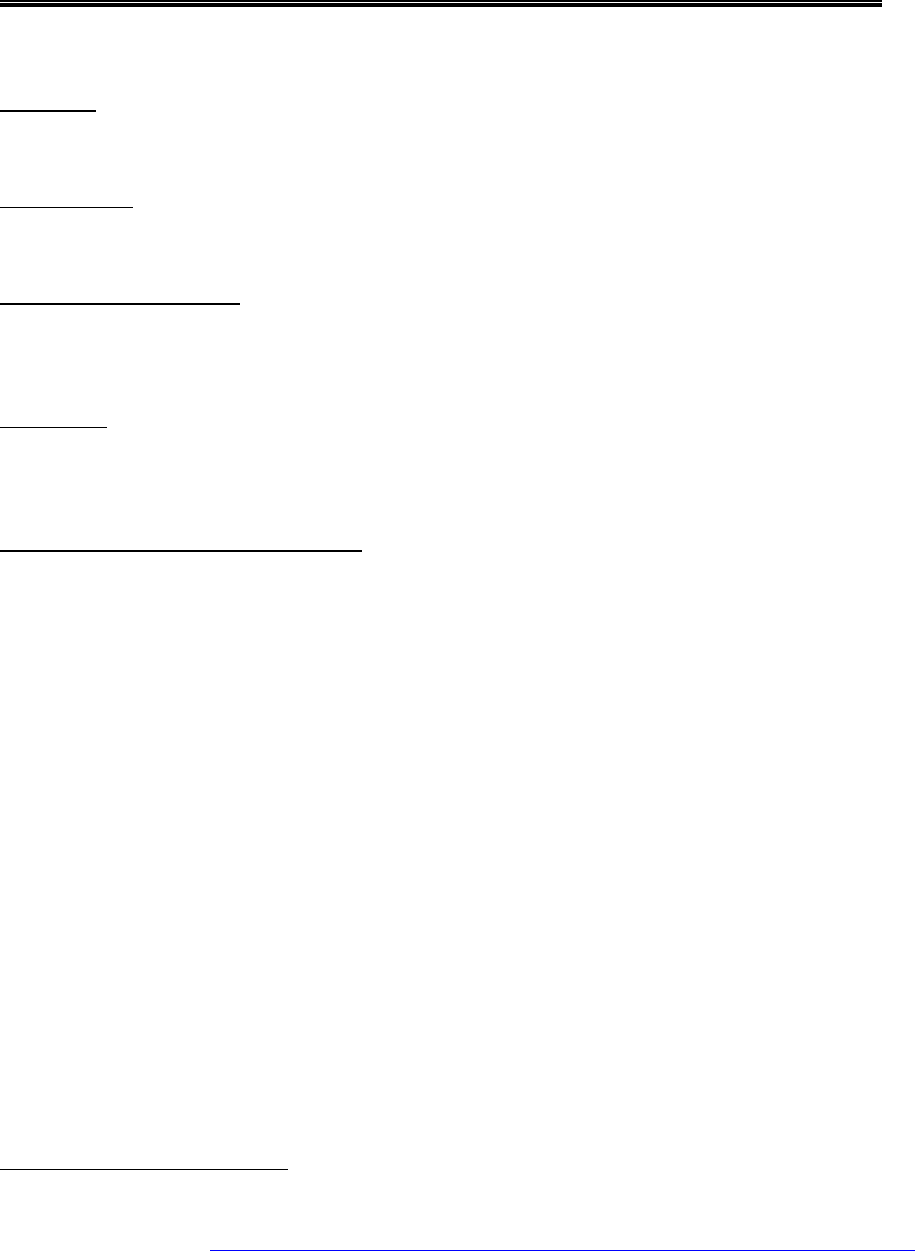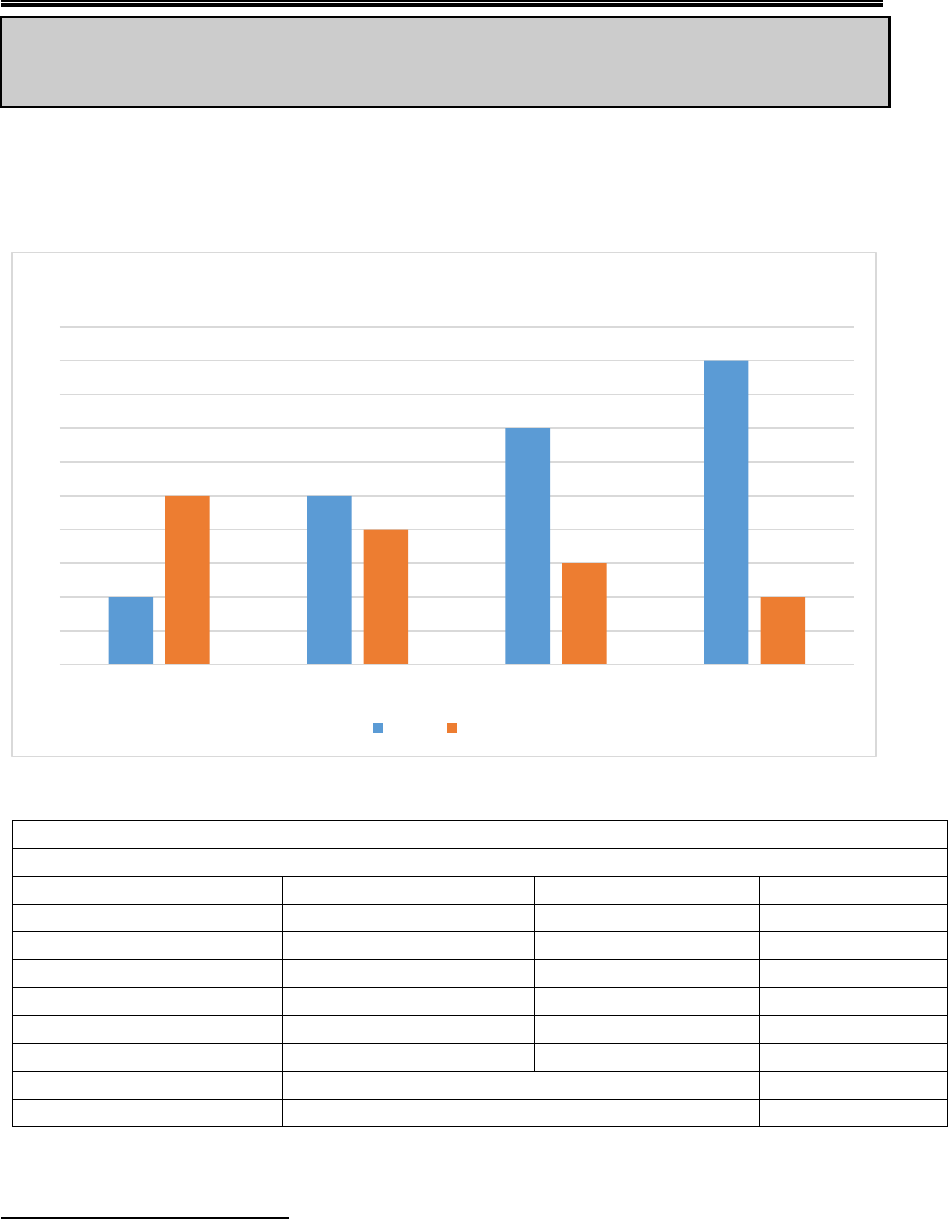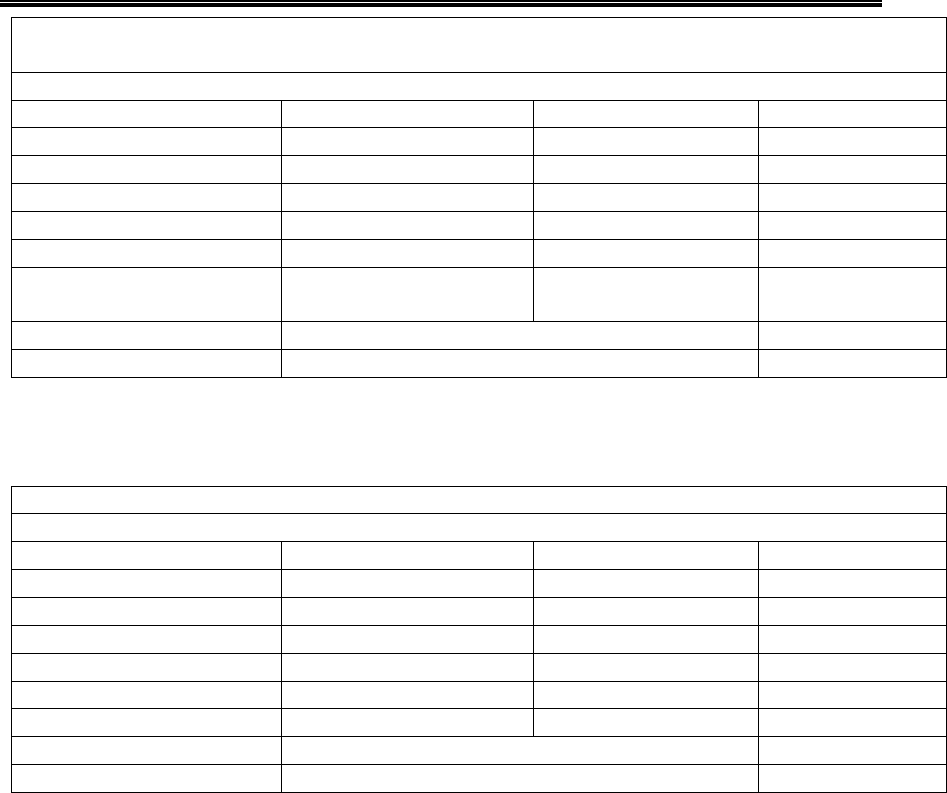
STATE OF IOWA
Department of Public Health
Employee Manual of Policies and Procedures
Effective Revision Date 10/2019
Page 1 of 25
Purpose
This policy provides guidance to Iowa Department of Public Health (IDPH) employees regarding
appropriate disclosures of IDPH data, including confidential public health records, and use of
aggregate counts and statistics in public health reports and publications. This policy also provides
guidance to local boards of health and health departments (including county, city, and district
boards and departments) regarding the release of data and reportable disease information, and
to persons external to IDPH who have access to confidential or implied confidential public health
data through a contract, data sharing agreement or research agreement with IDPH.
The Iowa Department of Public Health is governed by Iowa’s Public Records law and generally
provides public access to records it collects under IDPH legal authority (Iowa Code Chapter 22,
IDPH Policy # IM 11-04-015, Public Records). In addition, IDPH is committed to providing
information, data, and records to the public and the media to protect and improve the health
of the population. However, Iowa law also provides that certain information, data, and
records collected under IDPH legal authority are confidential and may not be disclosed to the
public. Examples of some, but not necessarily all, records and data IDPH is required by law to
maintain as confidential can be found in Appendix A.
The guidelines below are generally applicable to all public health information, records, or data collected
under the legal authority of IDPH that are confidential or that could lead to the identification of an
individual named in a confidential public health record when combined with other known sources of
information. However, certain confidential public health records are governed by additional regulations
as well as specific exemptions. Please see Appendix B for a list of some of the limited exceptions which
authorize release of confidential or personally identifiable information without a data sharing
agreement, research agreement, or contract.
Definitions
Business: Business means and includes every trade, occupation, or profession. This includes
organizations or entities with identifiable proper names. Examples include, but are not necessarily
limited to, schools, non-profit organizations, restaurants, companies, hospitals, or health care clinics.
Confidential Public Health Information, Record, or Data: A record, certificate, report, data, dataset, or
information which is confidential under federal or state law. As a general rule, public health records
which contain personally identifiable information of a health-related nature are confidential under Iowa
law. Examples of some, but not necessarily all, records IDPH is required by law to maintain as
confidential can be found in Appendix A.
Data Sharing Agreement: A legal contract between IDPH and any external entity (including other
departments within state government and Regent’s institutions), or between two internal IDPH
programs in which parties agree to the exchange of specified variables within an IDPH dataset, and use
of the data does not meet the definition of research constituting a need for a research agreement. Data
Disclosure of Confidential Public Health Information,
Records, or Data Policy #CO 01-16-002

STATE OF IOWA
Department of Public Health
Employee Manual of Policies and Procedures
Effective Revision Date 10/2019
Page 2 of 25
sharing agreements must align with processes outlined in IDPH Policy # CO 01-16-001, Data Sharing
Agreement (DSA).
Data User: Any person with access to confidential or implied confidential IDPH data, including small
count sizes. This includes, but is not limited to, IDPH employees, interns, temporary workers,
contractors, and individuals external to IDPH with access to IDPH data through an agreement.
Denominator: The number below the line in a common fraction; a divisor. For example, 3 in 2/3. For the
purposes of this policy, the denominator typically represents the total population or the total number of
persons or events from which the numerator is a subset.
Implied Confidential Data: Data which could be used to indirectly establish the identity of a person
named in a confidential public health record by the linking of the released information or data with
known external information which allows for the identification of such person. This commonly includes
de-identified row-level information about an individual, and can also include some small count sizes.
Numerator: The number above the line in a common fraction showing how many of the parts indicated
by the denominator are taken, for example, 2 in 2/3. For the purposes of this policy, the numerator is
the number of cases or the number of individuals with a health condition or that perform a health-
related behavior within a proportion.
Personally Identifiable Information (PII): Information that can be used to distinguish or trace an
individual’s identity, either alone or when combined with other personal or identifying information that
is linked or linkable to a specific individual.
For the purposes of this policy, the following variables are considered PII
1
:
● Name, including alias
● Geographic identifiers smaller than state (e.g., complete or partial street address, zip code,
census tract, county) when directly related to an individual
● Dates (other than year alone) directly related to an individual. For example:
○ Date of Birth
○ Date of Death
○ Date of Service
○ Date of Admission
○ Date of Discharge
● All ages over 89 years and all elements of dates (including year) indicative of such age
● Phone Number
● Fax Number
● Email Address
● Social Security Number (full or partial)
● Medical Record Number
● Certificate Number
● Device Identifiers and Serial Numbers
● Account Number
1
For the purposes of determining PII for this policy IDPH has used 45 CFR § 164.514(b)(2), which describes the
“Safe Harbor” method for deidentification within the Health Insurance Portability and Accountability Act (HIPAA).
Accessed June 2019 from https://www.hhs.gov/hipaa/for-professionals/privacy/special-topics/de-identification/.

STATE OF IOWA
Department of Public Health
Employee Manual of Policies and Procedures
Effective Revision Date 10/2019
Page 3 of 25
● Health Insurance beneficiary numbers (including Medicaid ID number)
● Internet Protocol (IP) Address Numbers
● Web Universal Resource Locators (URLs)
● Biometric identifiers, including finger, retinal and voice print and DNA
● Full face photographic images
● Any other unique identifying number, characteristic, or code
Note that additional variables may become PII when combined with other pieces of information.
Research Agreement: A legal contract between IDPH and any external entity (including other
departments within state government and Regent’s institutions) in which IDPH agrees to release specific
variables within an IDPH dataset for the purposes of bona-fide research. A research agreement is
required when the receiving entity intends to use the requested dataset for the purpose of research and
the user is bound by the confidentiality requirements in the research agreement. Research agreements
must align with processes outlined in IDPH Policy # CO 07-12-004, Research Agreement and Research
and Ethics Review Committee.
Policy
Data Users:
1. Confidential IDPH data shall not be released outside of the IDPH program for which the data was
collected unless there is an approved data sharing agreement, research agreement, or data
sharing terms within a contract OR the release is authorized according to one of the limited
exceptions outlined in state or federal law. Some of the most common exceptions are outlined
in Appendix B. See IDPH Policy # CO 0-01-16-001, Data Sharing Agreements and IDPH Policy #
CO 07-12-004, Research Agreement and Research and Ethics Review Committee.
2. Implied confidential IDPH data shall not be released outside of IDPH unless there is an approved
data sharing agreement, research agreement, or data sharing terms within a contract OR the
release is authorized according to one of the limited exceptions outlined in state or federal law.
Some of the most common exceptions are outlined in Appendix B.
Additionally, implied confidential data from a few select datasets shall not be released outside of
the program for which the data was collected without an approved data sharing agreement,
research agreement, or data sharing terms within a contract OR the release is authorized
according to one of the limited exceptions outlined in state or federal law. These datasets are
Vital Records, HIV, Substance Use, Traumatic Brain Injury, and Child Death Review. Data sharing
agreements or research agreements may be required in additional situations for internal
transfers of implied confidential data at the discretion of the Data Owner and IDPH Data
Management and Health Equity Program. See IDPH Policy # CO 0-01-16-001, Data Sharing
Agreements and IDPH Policy # CO 07-12-004, Research Agreement and Research and Ethics
Review Committee.
3. Any IDPH data received through a data sharing agreement, research agreement, or data sharing
terms within a contract may not be re-released unless authorized in writing within the
agreement or an amendment to the agreement.

STATE OF IOWA
Department of Public Health
Employee Manual of Policies and Procedures
Effective Revision Date 10/2019
Page 4 of 25
4. IDPH employees or those with access to IDPH data shall not respond to inquiries about
confidential data in a manner which confirms or denies the inquiry unless the release is
authorized according to one of the limited exceptions outlined in state or federal law (see
Appendix B for some exceptions).
5. In some situations, IDPH data may not be released, even in aggregate format, if it identifies a
business or presents proprietary concerns. This includes the release of the name of a business in
a reportable disease investigation. Contact the IDPH Data Management and Health Equity
Program or State Medical Director/State Epidemiologist with questions.
6. Statistical or aggregate data (for example: counts or rates based on counts) may be released
publicly if:
a. The count (numerator) is 6 or greater
2
AND the total population (denominator) is 100 or
greater AND a count of less than 6 cannot be derived through simple math when data is
presented in a table; OR
b. The value is considered appropriate to release according to the Data Release Analysis
Protocol
3
(as determined by the Data Management and Health Equity Program) (see
Appendix C); OR
c. Approval for an exception to the Data Release Analysis Protocol is received in writing
from the IDPH State Medical Director/State Epidemiologist as outlined in Appendix D;
OR
d. Data is appropriately suppressed.
IDPH Data Management and Health Equity Program
The IDPH Data Management and Health Equity Program shall:
1. Provide training and technical assistance to Data Users on data suppression, the Data Release
Analysis Protocol (see 6b above and Appendix C), and determining the need for a data sharing
agreement, research agreement, or data sharing terms within a contract.
2. Work with the IDPH State Medical Director/State Epidemiologist as requested to make decisions
regarding requested exceptions to the Data Release Analysis Protocol for the release of small
count sizes.
3. Receive and process all applications for Data Sharing Agreements and Research Agreements.
4. Maintain documentation for approved agreements and requests for exceptions to the Data
Release Analysis Protocol for release of small count sizes.
2
A count of zero may be released when it is not a threat to the confidentiality of individuals. If using zero in the negative to
indicate that an entire population has a disease, condition, event or behavior, zero should not be released. For example, stating
that zero children in a school suffered from influenza is acceptable. Stating that zero children in a school did not suffer from
influenza identifies that all children within that school had influenza and therefore violates those children’s confidentiality (and
should not be released).
3
The Iowa Department of Public Health’s Data Release Analysis Protocol has been adapted from the following sources: Alaska
Section of Epidemiology Confidentiality Policies and Procedures and Data Release Protocols, November 2018 (available here:
http://dhss.alaska.gov/dph/Epi/Documents/confidentiality/SOE_ConfidentialityPPData.pdf), California Department of Health
Care Services Data De-identification Guidelines Version 2.0, November 2016 (available here:
https://www.dhcs.ca.gov/dataandstats/Documents/DHCS-DDG-V2.0-120116.pdf), and State of New Hampshire, Division of
Public Health Services, Health Statistics and Data Management Section Guidelines for the Public Release of Public Health Data,
April 2016 (available here: https://www.dhhs.nh.gov/dphs/hsdm/documents/publichealthdata.pdf).

STATE OF IOWA
Department of Public Health
Employee Manual of Policies and Procedures
Effective Revision Date 10/2019
Page 5 of 25
IDPH Medical Director/State Epidemiologist
The IDPH State Medical Director/State Epidemiologist shall:
1. Review and approve or deny requests for exceptions to the Data Release Analysis Protocol as
described in Appendix C.
2. Contact and consult with legal counsel and/or the Department Director (or designee) when
necessary to make decisions about exceptions to the Data Release Analysis Protocol.
3. Provide documentation to the IDPH Data Management and Health Equity Program of all Data
Release Analysis Protocol exception requests and the decision for record-keeping.
Supervisor
It is management’s responsibility to have sufficient knowledge of this policy to direct employees to the
correct contacts and resources for making decisions about releases of data.
Policy/Procedure Violations
Violations of this policy are grounds for disciplinary action, up to and including discharge.
Additionally, a person who knowingly violates confidentiality statutes and administrative rules regarding
IDPH data may be subject to criminal prosecution for a simple misdemeanor and may be subject to
disciplinary action under IDPH or the relevant entity’s personnel policies, up to and including discharge
from employment. A person who releases HIV/AIDS information is subject to criminal prosecution for an
aggravated misdemeanor and is subject to civil action and civil penalties, and may be subject to
disciplinary action under IDPH or the relevant entity’s personnel policies, up to and including discharge
from employment (Iowa Code §§ 139A.25,141A.11).
In addition, while IDPH is not a covered entity under the Health Insurance Portability and Accountability
Act of 1996 (HIPAA), local boards of health and health departments generally are covered entities, and
may therefore be subject to an enforcement action under HIPAA if the local board of health or health
department releases protected health information in violation of that regulation. Local boards of health
and health departments should seek advice from their legal counsel to ensure their compliance with the
federal law.

STATE OF IOWA
Department of Public Health
Employee Manual of Policies and Procedures
Effective Revision Date 10/2019
Page 6 of 25
Examples of Records IDPH is Required by Law to Maintain as Confidential
The following is a list of many, but not necessarily all, IDPH data and records that Iowa law requires be
kept as confidential:
1. Hospital records, medical records, and professional counselor records of the condition,
diagnosis, care, or treatment of a patient. Iowa Code § 22.7(2).
2. Personal information in confidential personnel records. Iowa Code § 22.7(11).
3. Records pertaining to participants in the gambling treatment program. Iowa Code §
22.7(35).
4. Medical examiner records and reports, including preliminary reports, investigative reports, and
autopsy reports. Iowa Code § 22.7(41).
5. Personally identifiable medical information provided for the purpose of studies to reduce
morbidity or mortality. Iowa Code §§ 135.40, 135.41.
6. Social security numbers. 42 USC 405(c)(2)(C)(viii)
7. Personally identifiable information and business identity related to a reportable disease or
condition. Iowa Code § 139A.3; Iowa Code §§ 139A.30 - 32.
8. Personally identifiable information related to HIV/AIDS. These reports are maintained as “strictly
confidential medical information” and specific provisions prevent disclosure of this information
except under very limited circumstances. Iowa Code §§ 141A.6, 141A.9.
9. Personally identifiable information contained in IDPH registries, including the Statewide Trauma
Registry, Iowa EMS Patient Registry, Immunization Registry, Central Registry for Brain or Spinal
Cord Injuries, and Congenital and Inherited Disorder Registry. Iowa Code §§ 147A.25,
147A.26; 641 IAC 132(8)(7)(c); 641 IAC 136.2(5); Iowa Code section 22.7(2); 641 IAC 7.12; Iowa
Code § 135.22; Iowa Code § 136A.7.
10. Professional licensing board information, including EMS. All complaint files, investigative files,
investigative reports, and all other investigative information of a licensing board or its
employees or agents which relates to licensee discipline are confidential. Iowa Code
§ 272C.6(4). However, the statement of charges, notice of hearing, and the final decision of a
board, whether after hearing or through a settlement agreement, are public.
11. Vital statistics records. Iowa Code § 144.43.
12. Substance abuse program patient information and some licensing information. Iowa Code §
125.37; Iowa Code sections 22.7(2), 22.7(18), or 125.37; 641 IAC 155.16(5).
13. Iowa Domestic Abuse Death Review Team and Iowa Child Death Review Team records
pertaining to a specific death. Iowa Code § 135.111; Iowa Code § 135.43(3).
14. Records which contain identifiable information related to a child’s newborn hearing screening,
rescreening, and diagnostic audiologic assessment. 641 IAC 3.10.
15. Perinatal program surveys and reports. Iowa Code § 135.11(28).
16. All medical, health and nutrition information collected regarding WIC program participants.
7 CFR 246, Iowa Code section 22.7(2), 641 IAC 73.7(7).
17. Names of patients and primary caregivers issued a medical cannabidiol registration card. Iowa
Code § 124E.11.
18. Radon testing information. Iowa Code § 136B.2.
Disclosure of Confidential Public Health Information,
Records, or Data Policy – Appendix A

STATE OF IOWA
Department of Public Health
Employee Manual of Policies and Procedures
Effective Revision Date 10/2019
Page 7 of 25
Examples of limited exceptions which authorize release of confidential or personally
identifiable information.
Exceptions to this policy are provided by Iowa Code and Iowa Administrative Code. Other exceptions
beyond those listed here may exist. Please contact the IDPH Data Management and Health Equity
Program or legal counsel for assistance with exceptions.
1. Public health records may be released to the subject of the record upon receipt of a written
authorization for release from the subject or the subject’s legal representative (641 Iowa
Administrative Code 175.12, Iowa Code § 141A.9(2)”a”). IDPH should exercise caution to ensure
that other confidential information (for example reference to other ill individuals) contained in
the report is redacted prior to release to the subject.
2. Public health records may be released in response to a court order or subpoena (641 IAC
175.9(2)”g”, Iowa Code § 141A.9(2)”g”). Review shall be performed by the IDPH’s legal counsel
or local board of health and health department’s legal counsel prior to release.
3. IDPH may share personally identifiable information regarding diseases, health conditions,
unusual clusters, or suspicious events that may be the cause of a public health disaster with the
department of public safety, the homeland security and emergency management division of the
department of public defense, and other appropriate federal, state, and local agencies and
officials (Iowa Code § 135.145(2)). The sharing of such information must be restricted to only
that information necessary to prevent, control, and investigate the public health disaster (Iowa
Code § 135.145(3)).
4. Iowa Immunization Registry Information System (IRIS) records may be released to enrolled users
of the registry who have completed an enrollment form that specifies the conditions under
which the registry can be accessed and who have been issued an organization code and user
name by the department (641 Iowa Administrative Code 7.11(4)(a)(2)) and to the person or the
parent or legal guardian of the person immunized or screened (641 Iowa Administrative Code
7.11(4)(a)(1)).
5. Information concerning the identity of a business involved in a disease investigation may be
released to the public when the State Epidemiologist or the Director of IDPH determines such a
release of information necessary for the protection of the public (Iowa Code § 139A.3(2)”c”). In
these limited circumstances, efforts should be made to actively involve the business in the
release of the information to mitigate damages to the reputation of the business to the extent
feasible.
Prior to releasing the name of a business, local boards of health and health departments must
obtain a determination from the State Epidemiologist or the Director of IDPH that such a release
is necessary to protect the public. Local boards of health and health departments and officials
Disclosure of Confidential Public Health Information,
Records, or Data Policy – Appendix B

STATE OF IOWA
Department of Public Health
Employee Manual of Policies and Procedures
Effective Revision Date 10/2019
Page 8 of 25
are not authorized under law to make such a determination independently. IDPH will typically
consult with legal counsel prior to reaching this determination to ensure that the release of
information is appropriate from a legal and a public health perspective.
If a federal regulatory agency announces a recall of or issues a statement publicly identifying a
particular product, the State Epidemiologist automatically deems the release of the name of any
business identified in the recall or statement as necessary for the protection of the public.
Hence IDPH and local boards of health and health departments may refer to the proper name of
the business identified in a federal recall announcement or statement in any public release of
information about the investigation. However, information which identified any person involved
in such recall or investigation remains confidential.
6. Iowa law also allows IDPH to disclose reportable disease information under the following
circumstances:
o Reportable disease records and information may be shared by and between IDPH and
local public health employees and health care providers, hospitals, and laboratories, as
necessary to effectively conduct an investigation and to provide appropriate medical
care (Iowa Code § 139A.3, 641 IAC 1.4, 641 IAC 1.17(3)”c”)
o Reportable disease information may be included in a quarantine or isolation order or
site placard as necessary to prevent the spread of a quarantinable disease (Iowa Code §
139A.4, 139A.5, 641 IAC 1.9, 641 IAC 1.17(3)”e”). Public health officials should exercise
caution prior to posting such placards, and consult with IDPH’s legal counsel or the local
board of health and health department’s legal counsel prior to taking action.
o Personally identifiable information regarding AIDS/HIV may be released only in the
limited circumstances authorized by Iowa Code Section 141A.9.

STATE OF IOWA
Department of Public Health
Employee Manual of Policies and Procedures
Effective Revision Date 10/2019
Page 9 of 25
Data Release Analysis Protocol
4
Introduction
The Iowa Department of Public Health recognizes that the determination of whether or not a piece of
information could result in the identification of an individual is not always straightforward. Therefore,
the decision to release small count sizes based on confidential public health information, records, and
data is complex and involves the consideration of many factors. The Data Release Analysis Protocol
allows for the completion of a calculation to approximate the risk of an individual being identified if a
small count size is released. The specific factors considered in this calculation are as follows:
Statewide incidence or prevalence of the condition or behavior (how common)
Geographic size
Time interval for data presented
Age range of individuals represented within data
Sex distribution of individuals represented within data
Race distribution of individuals represented within data
The procedure below provides step by step instructions on how to implement and evaluate the results
of the Data Release Analysis Protocol. As a general principle, the Data Release Analysis Protocol
demonstrates how common demographic variables interact with each other to make the unintentional
identification of an individual more or less likely. The equation can be manipulated to allow the release
of desired information by broadening categories of least importance to your message. For example, this
protocol may allow for the release of detailed race and ethnicity information by broadening the
described geographic area or increasing the number of years of data. Additional examples can be found
on pages 20 through 24 of this policy. Please note that all examples used in this document are fictional.
This protocol considers the most commonly used demographic variables. Other descriptors (for
example: language spoken, sexual orientation, detailed income breakdowns, occupation, education
level, insurance status, immigration status, country of origin, military service, and others) may be just as
or more identifying than those described in these pages. It may be appropriate to multiply the final
answer of the protocol by 1/2 for each additional identifier that is provided. Because it is not possible to
outline every possible additional identifier, Data Users and the Data Management and Health Equity
Program should do this at their discretion. A list of additional considerations for the release of small
4
The Iowa Department of Public Health’s Data Release Analysis Procedure has been adapted from the following sources:
Alaska Section of Epidemiology Confidentiality Policies and Procedures and Data Release Protocols, November 2018 (available
here: http://dhss.alaska.gov/dph/Epi/Documents/confidentiality/SOE_ConfidentialityPPData.pdf), California Department of
Health Care Services Data De-identification Guidelines Version 2.0, November 2016 (available here:
https://www.dhcs.ca.gov/dataandstats/Documents/DHCS-DDG-V2.0-120116.pdf), and State of New Hampshire, Division of
Public Health Services, Health Statistics and Data Management Section Guidelines for the Public Release of Public Health Data,
April 2016 (available here: https://www.dhhs.nh.gov/dphs/hsdm/documents/publichealthdata.pdf).
Disclosure of Confidential Public Health Information,
Records, or Data Policy – Appendix C

STATE OF IOWA
Department of Public Health
Employee Manual of Policies and Procedures
Effective Revision Date 10/2019
Page 10 of 25
count sizes can be found in Appendix D. All requests for the release of small count sizes (n ≤5) through
the use of the Data Release Analysis Protocol should be emailed to the IDPH Data Sharing Coordinator,
the Director of Data Management and Health Equity, or to [email protected].
Protocol
1. For statistical or aggregate data, if the count (numerator) is 6 or greater AND the total
population (denominator) is 100 or greater AND a count of less than 6 cannot be derived
through simple math when data is presented in a table, the value can be released publicly. Do
not continue with this procedure.
2. If any of the following situations apply, please consider their impact on data release before
proceeding:
a. Iowa Youth Survey data cannot be released when counts sizes are n≤10 due to informed
consent documents provided to parents, students, and schools.
b. Behavioral Risk Factor Surveillance System (BRFSS) data cannot be released for a
geographic region of county or smaller without approval from the BRFSS Program due to
limitations in sampling methodology for small geographic areas.
c. Pregnancy Risk Assessment Monitoring System (PRAMS) data cannot be released for a
geographic region of county or smaller without approval from the PRAMS Program due
to limitations in sampling methodology for small geographic areas.
d. Any releases of data received through a data sharing agreement, research agreement,
or contract must first comply with all terms set forth in the agreement. The procedure
below would apply after all conditions within the agreement are satisfied.
3. Begin the Data Release Analysis Protocol by completing the Data Release Analysis Table (see
Table 1 below) for your intended data release. Do this by replacing a-f in the Data Release
Analysis Table with the appropriate numerical values as provided within Tables 3-1 through 3-6.
See Table 2 for an example of a completed Data Release Analysis Table.
Table 1
Data Release Analysis Table
Characteristic
Current
Scenario
Description
Score
Incidence/Prevalence
Scoring criteria within Table 3-1
a
Population Size
Scoring criteria within Table 3-2
b
Time Interval
Scoring criteria within Table 3-3
c
Age Range Distribution
Scoring criteria within Table 3-4
d
Sex/Gender Distribution
Scoring criteria within Table 3-5
e
Race/Ethnicity Distribution
Scoring criteria within Table 3-6
f
Total Score
(a)(b)(c)(d)(e)(f)=
X
Release (Y/N)?
If X≥1, release data,
If X<1, do not release data

STATE OF IOWA
Department of Public Health
Employee Manual of Policies and Procedures
Effective Revision Date 10/2019
Page 11 of 25
Table 2: Example
Example: Two Iowa children aged 1-14 years had a hospital visit for asthma in 2018.
Data Release Analysis Table
Characteristic
Current Scenario
Description
Score
Incidence/Prevalence
Asthma Hospitalizations -
Incidence rate of 301 per
100,000
Common
1
Population Size
Iowa
Statewide
5
Time Interval
2018
1 yr
1
Age Range Distribution
1 - 14
5 to 19 year range
1/2
Sex/Gender Distribution
All sexes
All
1
Race/Ethnicity Distribution
All Races
All
1
Total Score
(1*5*1*1/2*1*1)=
2.5
Release (Y/N)?
Yes
3-1. Using the scoring criteria in Table 3-1, assign a score for the commonality of the situation
represented within the intended data release. This can be done through incidence, prevalence, or
statewide count of events. Notice that deaths from any cause are treated differently from other data
sources. This is due to the large amount of publicly available information within obituaries.
Table 3-1: Incidence or Prevalence of Condition/Behavior
Numerator Condition
Description
Assigned Score
Death
(This score should be used anytime releasing data
about death, regardless of the cause).
Death
1/2
Rare Condition, Behavior, or Event
(This score should generally be used when a
condition or behavior has a statewide incidence or
prevalence rate of less than 6 per 100,000 population
in the year of data release. This score should also be
used in situations when 190 or fewer events occurred
statewide within the year for the data release).
Rare
1/2
Common Condition, Behavior, Event
(This score should generally be used when a
condition or behavior has a statewide incidence or
prevalence rate of 6 or greater per 100,000
population in the year of data release. This score
should also be used for events when more than 190
events occurred statewide within the year for the
data release).
Common
1

STATE OF IOWA
Department of Public Health
Employee Manual of Policies and Procedures
Effective Revision Date 10/2019
Page 12 of 25
3-2. Using the scoring criteria in Table 3-2, assign a score for the population size of the geographic area
for which the data will be released. This should include individuals of all ages, sexes, races, and
ethnicities, even if data release is only for a specific subset of the geographic region’s population. These
variables are accounted for elsewhere within the protocol. Population estimates can be located on the
Iowa State Data Center website (https://www.iowadatacenter.org/). Data for geographic regions of less
than 300 should not typically be released. Please skip directly to Appendix D if wanting to release data
for smaller geographic regions.
Table 3-2: Population Size for Geographic Region
Population Size
Description
Assigned Score
301 to 1,000
301 to 1,000
1/4
1,001 to 3,000
1,001 to 3,000
1/2
3,001 to 20,000
3,001 to 20,000
1
20,001 to 50,000
20,001 to 50,000
2
50,001 to 100,000
50,001 to 100,000
3
100,001 and up to statewide
population
100,001 to state
4
Statewide (3.156 million)
Statewide
5
3-3. Using the scoring criteria in Table 3-3, assign a score for the time interval or reporting period for
which the data will be released. Data for time intervals of less than one month should not typically be
released. Please skip directly to Appendix D if wanting to release data for smaller time intervals.
Table 3-3: Time/Reporting Period
Time/Reporting Period
Description
Assigned Score
1 month (Example: June of 2019)
1 mo
1/12
3 months (Example: First quarter
of 2019)
3 mo
3/12
1 Year (Example: 2019)
1 yr
1
2 Years (Example: 2018-2019)
2 yr
2
3 Years (Example: 2017-2019)
3 yr
3
4 Years (Example: 2016-2019)
4 yr
4
5 or More Years (Example: 2015-
2019)
5+ yr
5

STATE OF IOWA
Department of Public Health
Employee Manual of Policies and Procedures
Effective Revision Date 10/2019
Page 13 of 25
3-4. Using the scoring criteria in Table 3-4, assign a score for the age range of individuals included in
your intended data release. This scoring criteria is based on the number of years spanning the age range
of individuals represented within the data. In the event that a table, chart, graph, or spreadsheet
includes multiple age ranges, use the scoring for the smallest/narrowest age range (lowest score). Note:
Consider an upper age limit of 100 years when presenting data at the top end of the age scale. For
example, 65+ would be an age grouping of 35 years and 85+ would be an age grouping of 15 years.
Table 3-4: Age Range
Age Range
Description
Assigned Score
Single Age or Single Grade in School
(For example: infant, 1 year old, 14 year
old, 30 year old, second graders, etc.)
Single Age
1/8
Two, Three, or Four Year Age Range
(For example: 1-3 year olds, 3-5 year
olds, 12-15 year olds, 18-21 year olds)
2,3, or 4 year range
1/4
Five Years to 19 Years Age Range
(For example: All children, 0-4 year olds,
1-14 year olds, 15-24 year olds, 85+
years)
5 to 19 year range
1/2
20 or More Years Age Range
(For example: Adults, 25-44 year olds,
45-64 year olds, 65+ years)
20+ year range
1

STATE OF IOWA
Department of Public Health
Employee Manual of Policies and Procedures
Effective Revision Date 10/2019
Page 14 of 25
3-5. Using the scoring criteria in Table 3-5, assign a score for the sex or gender distribution of individuals
included in your intended data release.
Table 3-5: Sex or Gender Distribution
Sex or Gender
Description
Assigned Score
Male/Female/Any Additional Category(ies) (if
describing sex)
or
Man/Woman/Any Additional Category(ies) (if
describing gender)
(This score should be used when
tables/graphs/figures break data down into sex
or gender categories that are further
disaggregated than male/female. Examples are
male/female/not determined and
man/woman/transgender/genderqueer/another
gender identity. This score should also be used
when the intended data release describes
transgender men, transgender women,
genderqueer, gender neutral, non-binary, or
another gender identity not described as man or
woman.)
3+ Categories
1/4
Male/Female (if describing sex) or Man/Woman
(if describing gender)
(This score should be used when
tables/graphs/figures break data down into
male and female categories OR when the
intended data release includes only males or
only females).
2 Categories
1/2
All sexes or all genders
(This score should be used when explicitly
stating that all sexes or genders are included or
when no information about sex or gender is
provided and it can be assumed that all sexes or
genders are included.)
All
1

STATE OF IOWA
Department of Public Health
Employee Manual of Policies and Procedures
Effective Revision Date 10/2019
Page 15 of 25
3-6. Using the scoring criteria in Table 3-6, assign a score for the race and/or ethnicity distribution for
your data release scenario. The scoring below is based on 2018 US Census population estimates for Iowa
and may change in the future as the demographic profile of Iowa changes.
Table 3-6: Race/Ethnicity Distribution
Race or Ethnicity
Description
Assigned Score
Race/ethnicity disaggregation within a table/graph/figure
or single race that include any of the following (regardless
of other categories included):
American Indian and Alaska Native,
Native Hawaiian and Other Pacific Islander,
Hispanic Black or African American,
Hispanic American Indian/Alaska Native,
Hispanic Asian,
Hispanic Native Hawaiian/Other Pacific Islander,
Hispanic 2 or More Races,
Non-Hispanic American Indian or Alaska Native,
Non-Hispanic Native Hawaiian or Other Pacific
Islander
Detailed
1/4
Race/ethnicity disaggregation within a table/graph/figure
or single race that include any or all of the following with
no additional categories:
White,
Black or African American,
Asian,
2 or More Races,
Other
All Hispanic or Latino,
All Non-Hispanic
Non-Hispanic White,
Non-Hispanic Black or African American,
Non-Hispanic Asian,
Non-Hispanic Mixed or Multiple Races (2 or more
races),
General
1/2
All races, all ethnicities
(This score should be used when no disaggregation by race
or ethnicity is completed and when no race/ethnicity
information is given.)
All
1

STATE OF IOWA
Department of Public Health
Employee Manual of Policies and Procedures
Effective Revision Date 10/2019
Page 16 of 25
4. After assigning scores for each of the six characteristics, multiply (do not add) the six assigned
values within the score column. Place the answer in the total score box of the Data Release
Analysis Table. See example below.
Example: Two Iowa children aged 1-14 years had a hospital visit for asthma in 2018.
Table 4: Example
Data Release Analysis Table
Characteristic
Current Scenario
Description
Score
Incidence/Prevalence
Asthma Hospitalizations -
Incidence rate of 301 per
100,000
Common
1
Population Size
Iowa
Statewide
5
Time Interval
2018
1 yr
1
Age Range Distribution
1 - 14
5 to 19 year range
1/2
Sex/Gender Distribution
All sexes
All
1
Race/Ethnicity Distribution
All Races
All
1
Total Score
(1*5*1*1/2*1*1) =
2.5
Release (Y/N)?
5. Based on the total score, determine whether or not the data within your current scenario can be
released.
a. A score of 1 or greater indicates that the data can be released without suppression or a
data sharing agreement, research agreement, or data sharing terms within a contract.
Data Users should still confirm appropriateness of release with their supervisors, as
appropriate.
b. A score of less than one indicates that the data cannot be released unless proper
suppression is applied, a data sharing agreement, research agreement, or data sharing
terms within a contract are executed, or a formal exception from the IDPH State
Medical Director/State Epidemiologist according to the process outlined within
Appendix D.
Example: Two Iowa children aged 1-14 years had a hospital visit for asthma in 2018.
Table 5: Example
Data Release Analysis Table
Characteristic
Current Scenario
Description
Score
Incidence/Prevalence
Asthma Hospitalizations
- Incidence rate of 301
per 100,000
Common
1
Population Size
Iowa
Statewide
5
Time Interval
2018
1 yr
1
Age Range Distribution
1 - 14
5 to 19 year range
1/2
Sex/Gender Distribution
All sexes
All
1
Race/Ethnicity Distribution
All Races
All
1
Total Score
(1*5*1*1/2*1*1)=
2.5
Release (Y/N)?
Yes

STATE OF IOWA
Department of Public Health
Employee Manual of Policies and Procedures
Effective Revision Date 10/2019
Page 17 of 25
6. If Data Users disagree with the results of the Data Release Analysis Protocol and would like the
scenario reviewed by the IDPH State Medical Director/State Epidemiologist, please refer to
Appendix D below.

STATE OF IOWA
Department of Public Health
Employee Manual of Policies and Procedures
Effective Revision Date 10/2019
Page 18 of 25
Procedure for Requesting an Exemption from State Medical
Director/Epidemiologist
1. To request an exception to the Data Release Analysis Protocol from the IDPH State Medical
Director/State Epidemiologist, the following procedures shall be followed:
a. Send an email to the IDPH State Medical Director/State Epidemiologist and copy the
following individuals: Deputy State Epidemiologist, Director of Data Management and
Health Equity, and Data Sharing Coordinator. This email shall have the subject line:
Approval Requested for Exemption to Data Release Policies
b. In the body of the email, include the following information:
i. Description of data to be released
ii. Description of how and where the data will be released (for example: within
report, on webpage, to media, etc.)
iii. Explanation for why the release is necessary to improve and protect the health
of Iowans. This explanation should clearly outline why providing a suppressed
value is not sufficient.
iv. Explanation for how this release will not violate the confidentiality of individuals
v. Results of the Data Release Analysis Protocol (See Appendix C)
vi. Any additional information requested by the State Medical Director/State
Epidemiologist
Contacts for Assistance
Position
Name
Email
State Medical Director/State
Epidemiologist
Caitlin Pedati, MD, MPH, FAAP
Deputy State Epidemiologist
Ann Garvy, DVM, MPH, MA
Director of Data Management
and Health Equity
Betsy Richey, PhD, MPH
Data Sharing Coordinator
Kelsey Feller, MPH
Last edited date: 10/1/19
Disclosure of Confidential Public Health Information,
Records, or Data Policy – Appendix D

STATE OF IOWA
Department of Public Health
Employee Manual of Policies and Procedures
Effective Revision Date 10/2019
Page 19 of 25
Additional considerations for determining the potential for indirectly identifying
an individual based on the release of small count sizes:
The following are not required to be considered within the Data Release Analysis Protocol. However,
Data Users and the Data Management and Health Equity Program should be aware of the following
concepts, and may make the decision to suppress or withhold small count sizes for these reasons.
1. The Data Release Analysis Protocol considers the most commonly used demographic variables.
Other descriptors (for example: language spoken, sexual orientation, detailed income
breakdowns, occupation, education level, insurance status, immigration status, country of
origin, current or former military service, and others) may be just as or more identifying than
those described in these pages. It may be appropriate to multiply your final answer from the
Data Release Analysis Protocol by 1/2 for each additional identifier that is provided. Because it is
not possible to identify every possible additional identifier, Data Users and the Data
Management and Health Equity Program should do this at their discretion.
2. For the purpose of the Data Release Analysis Protocol, no distinction is made between the
geographic region of incidence versus the geographic region of residence. However, Data Users
should be aware that providing data for geographic region of residence is generally a larger
concern for confidentiality because of the high number of publicly available records that identify
an individual’s home address. Exceptions to this may occur when a highly publicized or high
profile incident or accident occurs, in which case the geographic region of incidence may be
more identifying.
3. There may be situations when despite the fact that a data release includes all ages, all sexes, or
all races/ethnicities, there are reasons to believe that the majority of individuals included within
the small number are of a specific sex, race, or ethnicity category. For example sickle cell disease
is most common in Black or African American individuals, cystic fibrosis is most common in
white individuals, breast cancer is most common in females, and heart attacks are most likely to
occur in adults and not children. While it is not possible to be aware of all of these situations,
Data Users should consider them when they are aware of these circumstances.
4. There are some circumstances when releasing a large number is equally concerning for indirect
identification than a small number. For example, if 27 students within a class report that they
have not used alcohol in the last 30 days and we know that the class size is 30, we
unintentionally released that 3 students within the class have used alcohol in the last 30 days.
Likewise, if we state that 100 people that attended a wedding suffered from a food-borne illness
and there were only 110 people total at the wedding, the confidentiality of those 100 wedding
guests could be compromised. Use caution anytime reporting in situations when a number
released represents a large proportion of the total population.
5. Some health conditions, events, and behaviors are apparently visible. Some are almost
impossible to identify unless an individual choses to disclose the information. For example,
Disclosure of Confidential Public Health Information,
Records, or Data Policy – Appendix E

STATE OF IOWA
Department of Public Health
Employee Manual of Policies and Procedures
Effective Revision Date 10/2019
Page 20 of 25
obesity, varicella (chicken pox), having an ambulance arrive at your residence (EMS runs),
pregnancy, or smoking are examples of visible behaviors, events, or conditions that may
increase the likelihood of unintentional identification. Other examples such as whether or not
an individual has received a vaccination or conditions such as diabetes or heart disease are less
visible. Data Users may wish to consider using additional precautions for visible conditions or
traits.
6. At times, Data Users may wish to release multiple tables from the same dataset. Data Users
should be aware that this can increase the likelihood of unintentional identification of an
individual. Because of this, Data Users should consider the full body of information they have
released on a topic and known sources from other agencies when making data release
decisions.
7. This document speaks to protecting the confidentiality of Iowans through appropriate data use.
There are times when data should not be released due to concerns with reliability, validity, or
specific sampling methodologies. Those situations are beyond the scope of this policy, but are
still of extreme importance. Data Users should consult epidemiologists and data owners when
questions about this arise.

STATE OF IOWA
Department of Public Health
Employee Manual of Policies and Procedures
Effective Revision Date 10/2019
Page 21 of 25
Additional Examples
5
: Data Release Analysis Protocol
Example 1:
Example: Cardiovascular disease deaths in Iowa, 2015-2018
Data Release Analysis Table
Characteristic
Current Scenario
Description
Score
Incidence/Prevalence
Death
Death
1/2
Population Size
Iowa
Statewide
5
Time Interval
2015, 2016, 2017, 2018
1 yr
1
Age Range Distribution
All Ages
All
1
Sex/Gender Distribution
Male/Female
2 Categories
1/2
Race/Ethnicity Distribution
All Races
All
1
Total Score
(1/2*5*1*1*1/2*1)=
1.25
Release (Y/N)?
Yes
Notes: Even though four years of data are presented, the time interval unit for each small count is a
single year.
5
Note that all examples used within this policy are fictional.
0
1
2
3
4
5
6
7
8
9
10
2015 2016 2017 2018
Cardiovascular Disease Deaths in Iowa
Males Females
Disclosure of Confidential Public Health Information,
Records, or Data Policy – Appendix F

STATE OF IOWA
Department of Public Health
Employee Manual of Policies and Procedures
Effective Revision Date 10/2019
Page 22 of 25
Example 2:
E. Coli Cases in Iowa, 2018
Floyd County
Polk County
Bremer County
Warren County
Non-Hispanic, White
2
3
2
3
Non-Hispanic, Black
5
2
3
2
Hispanic
2
1
4
2
Other
6
4
2
3
Example: E. Coli Cases in Floyd County, 2018
Data Release Analysis Table
Characteristic
Current Scenario
Description
Score
Incidence/Prevalence
E. Coli (9.85/100,000)
Common
1
Population Size
Floyd County – 15,761
3001 to 20,000
1
Time Interval
2018
1 yr
1
Age Range Distribution
All Ages
All
1
Sex/Gender Distribution
All sexes
All
1
Race/Ethnicity Distribution
Black, White, Hispanic,
Other
General
1/2
Total Score
(1*1*1*1*1*1/2)=
Release (Y/N)?
No
Example: E. Coli Cases in Polk County, 2018
Data Release Analysis Table
Characteristic
Current Scenario
Description
Score
Incidence/Prevalence
E. Coli (9.85/100,000)
Common
1
Population Size
Polk County – 487,204
100,000 to state
4
Time Interval
2018
1 yr
1
Age Range Distribution
All Ages
All
1
Sex/Gender Distribution
All sexes
All
1
Race/Ethnicity Distribution
Black, White, Hispanic,
Other
General
1/2
Total Score
(1*1*1*1*1*1/2)=
2
Release (Y/N)?
Yes

STATE OF IOWA
Department of Public Health
Employee Manual of Policies and Procedures
Effective Revision Date 10/2019
Page 23 of 25
Example: E. Coli Cases in Bremer County, 2018
Data Release Analysis Table
Characteristic
Current Scenario
Description
Score
Incidence/Prevalence
E. Coli (9.85/100,000)
Common
1
Population Size
Bremer County – 24,947
20,001 to 50,000
2
Time Interval
2018
1 yr
1
Age Range Distribution
All Ages
All
1
Sex/Gender Distribution
All sexes
All
1
Race/Ethnicity Distribution
Black, White, Hispanic,
Other
General
1/2
Total Score
(1*1*1*1*1*1/2)=
1
Release (Y/N)?
Yes
Example: E. Coli Cases in Warren County, 2018
Data Release Analysis Table
Characteristic
Current Scenario
Description
Score
Incidence/Prevalence
E. Coli (9.85/100,000)
Common
1
Population Size
Warren County – 51,056
50,001 to 100,000
3
Time Interval
2018
1 yr
1
Age Range Distribution
All Ages
All
1
Sex/Gender Distribution
All sexes
All
1
Race/Ethnicity Distribution
Black, White, Hispanic,
Other
General
1/2
Total Score
(1*1*1*1*1*1/2)=
1.5
Release (Y/N)?
Yes
Notes: In this example, the size of the county of residence impacts the release decision. The small counts
can be released for all counties except Floyd. This is demonstrated below, with the small counts for Floyd
County suppressed in the final table.
E. Coli Cases in Iowa, 2018
Floyd County
Polk County
Bremer County
Warren County
Non-Hispanic, White
*
3
2
3
Non-Hispanic, Black
*
2
3
2
Hispanic
*
1
4
2
Other
6
4
2
3
Example 3:

STATE OF IOWA
Department of Public Health
Employee Manual of Policies and Procedures
Effective Revision Date 10/2019
Page 24 of 25
Example: 2 Iowans had a Hepatitis C Virus (HCV) diagnosis in 2017.
Data Release Analysis Table
Characteristic
Current Scenario
Description
Score
Incidence/Prevalence
HCV (45.3 per 100,000)
Common
1
Population Size
Iowa
Statewide
5
Time Interval
2017
1 yr
1
Age Range Distribution
All Ages
All
1
Sex/Gender Distribution
All sexes
All
1
Race/Ethnicity Distribution
All races/ethnicities
All
1
Total Score
(1*5*1*1*1*1)=
5
Release (Y/N)?
Yes
Example 4:
Example: 2 Iowans who identify as American Indian/Alaska Native had a HCV diagnosis in 2017.
Data Release Analysis Table
Characteristic
Current Scenario
Description
Score
Incidence/Prevalence
HCV (45.3 per 100,000)
Common
1
Population Size
Iowa
Statewide
5
Time Interval
2017
1 yr
1
Age Range Distribution
All Ages
All
1
Sex/Gender Distribution
All sexes
All
1
Race/Ethnicity Distribution
American Indian/Alaskan
Native
Detailed
1/4
Total Score
(1*5*1*1*1*1/4)=
1.25
Release (Y/N)?
Yes
Example 5:
Example: 2 Iowans in Keokuk County who identify as American Indian/Alaska Native had a HCV
diagnosis in 2017.
Data Release Analysis Table
Characteristic
Current Scenario
Description
Score
Incidence/Prevalence
HCV (45.3 per 100,000)
Common
1
Population Size
Keokuk County – 10,149
3001 to 20,000
1
Time Interval
2017
1 yr
1
Age Range Distribution
All Ages
All
1
Sex/Gender Distribution
All sexes
All
1
Race/Ethnicity Distribution
American Indian/Alaskan
Native
Detailed
1/4
Total Score
(1*1*1*1*1*1/4)=
0.25
Release (Y/N)?
No
Example 6:

STATE OF IOWA
Department of Public Health
Employee Manual of Policies and Procedures
Effective Revision Date 10/2019
Page 25 of 25
Example: 2 Iowans in Polk County who identify as American Indian/Alaska Native had a HCV diagnosis
in 2017.
Data Release Analysis Table
Characteristic
Current Scenario
Description
Score
Incidence/Prevalence
HCV (45.3 per 100,000)
Common
1
Population Size
Polk County – 481,086
100,000 to state
4
Time Interval
2017
1 yr
1
Age Range Distribution
All Ages
All
1
Sex/Gender Distribution
All sexes
All
1
Race/Ethnicity Distribution
American Indian/Alaskan
Native
Detailed
1/4
Total Score
(1*4*1*1*1*1/4)=
1.00
Release (Y/N)?
Yes
Example 7:
Example: 3 Iowa children who identify as Black or African American died from drowning in 2017.
Data Release Analysis Table
Characteristic
Current Scenario
Description
Score
Incidence/Prevalence
Death
Death
1/2
Population Size
Iowa
Statewide
5
Time Interval
2017
1 yr
1
Age Range Distribution
Children
5 to 19 Year Range
1/2
Sex/Gender Distribution
All sexes
All
1
Race/Ethnicity Distribution
Black or African American
General
1/2
Total Score
(1/2*5*1*1/2*1*1/2)=
0.625
Release (Y/N)?
No
______________________________________________________________________________________
Director’s Signature Date
